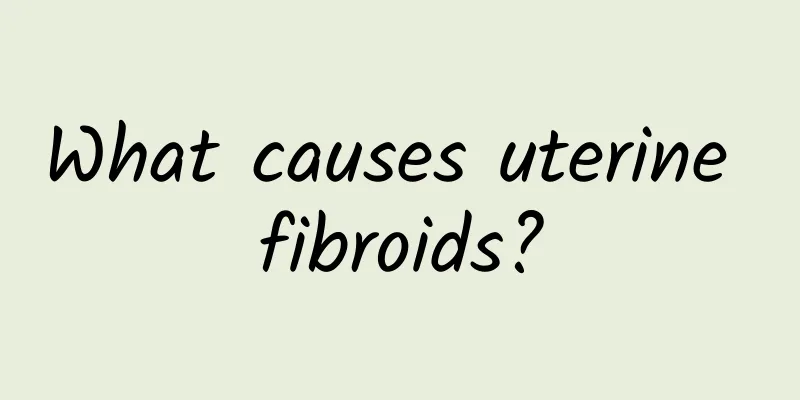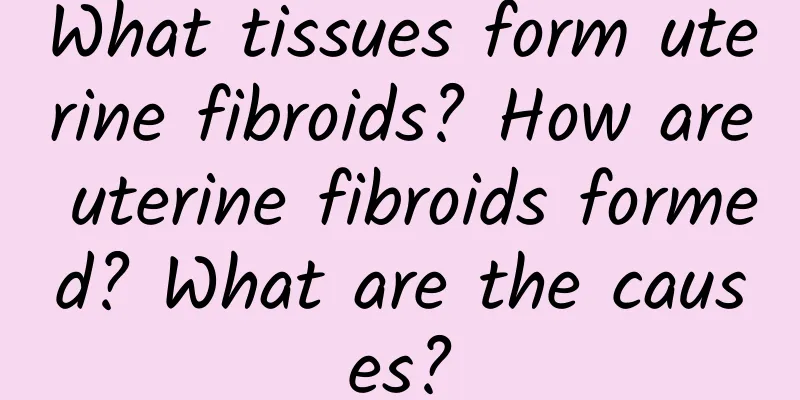Analysis of typical cases of acute pelvic inflammatory disease

|
The symptoms of acute pelvic inflammatory disease are: it is an acute disease, severe condition, and may cause lower abdominal pain, fever, chills, headache, and loss of appetite. During the examination, the patient was found to be acutely ill, with high body temperature, fast heart rate, muscle tension, tenderness, and rebound pain in the lower abdomen. Nausea, abdominal distension, vomiting, diarrhea, etc. may occur when there is peritonitis; when pus is formed, there may be a lower abdominal mass and local compression and irritation symptoms. If the mass is located in the front, there may be difficulty urinating, frequent urination, urinary pain, etc., and if the mass is located in the back, it may cause diarrhea. The following is an analysis of typical cases of acute pelvic inflammatory disease. Medical history 1. Medical history summary: Zhang*, female, 40 years old. Chief complaint: lower abdominal pain with irregular vaginal bleeding for more than 3 months, and abdominal mass found for 1 month. The patient usually has regular menstruation, 6/28 days. Three months ago, she felt dull pain in the lower abdomen, accompanied by irregular vaginal bleeding, and low fever in the afternoon. Because she felt that the symptoms were mild, she did not go to the hospital for treatment. Later, she felt that the abdominal pain worsened, accompanied by fever, and the self-measured body temperature was about 38.0℃, without chills and chills. She went to the local hospital for treatment and was diagnosed with "pelvic inflammatory disease" and given oral antibiotics. The abdominal pain was relieved, but she still felt weak and uncomfortable. The frequency of urination increased in the past month, but there was no urgency or pain when urinating. When the patient lay flat, she could touch the lower abdominal mass by herself. She went to the hospital for a follow-up visit, and a pelvic B-ultrasound examination revealed a "pelvic mass" and she was admitted to the hospital. The patient was "pregnant with an IUD" six months ago. She underwent curettage more than 70 days into the pregnancy. One week later, she underwent another uterine curettage and IUD placement due to heavy bleeding from "tissue residue". She was treated with oral antibiotics after the operation; afterwards, she often felt weak and her menstruation was not clean, but there was no abdominal pain, fever and other discomfort. Since the onset of the disease, the patient has been in a bad mood, has a poor appetite, has an increased frequency of bowel movements, has yellow-brown mushy stools, has no urgency, has an increased frequency of urination, and has lost about 5kg in weight. She was previously healthy, denied a history of infectious diseases such as "tuberculosis" and surgical trauma, and denied a history of drug allergies. She had her first menstruation at the age of 16, on 6/28 days, married at the age of 23, 2-0-2-2, has two sons, and uses an intrauterine device for contraception. There is no special family history. 2. Medical history analysis: (1) Acute pelvic inflammatory disease is often caused by the failure to completely treat acute pelvic inflammatory disease or the patient's poor physical condition leading to a prolonged course of the disease. Therefore, when inquiring about the medical history, attention should be paid to the recent history of pelvic surgery and acute pelvic inflammatory disease. This patient had a history of two intrauterine operations six months ago, and the main symptoms were abdominal pain and fever, so acute pelvic inflammatory disease should be considered first. However, the patient had changes in bowel habits and symptoms of chronic consumption, so attention should also be paid to distinguishing gastrointestinal and pelvic malignant tumors. (2) Medical history characteristics: ① Three months ago, she felt dull pain in the lower abdomen, accompanied by irregular vaginal bleeding. ② She had a low-grade fever in the afternoon and was given oral antibiotics at a local hospital. The abdominal pain was relieved, but she still felt weak and uncomfortable. ③ Ultrasound revealed a "pelvic mass". ④ She had a curettage six months ago because she was more than 70 days pregnant. One week later, she had another uterine curettage and IUD placement because of heavy bleeding due to "tissue residue". ⑤ She was in poor spirits, had a decreased appetite, and lost about 5 kg in weight. Physical examination 1. Results: T37.9℃, P108 times/min, R20 times/min, BP100/70mmHg. The general condition is good, with normal development, poor nutrition, chronic anemia, and clear consciousness; there are scattered pinpoint-sized bleeding spots on the skin of the neck, and no yellowing of the skin on the whole body; the inguinal lymph nodes can be touched as big as mung beans, and are beaded; there is no deformity of the head, pale eyelids and lips, and no yellowing of the sclera; the neck is soft, the trachea is centered, there is no distended neck vein, and the thyroid gland is not enlarged; there is no deformity of the thorax, and the breath sounds of both lungs are clear, without dry or wet sounds; the heart rate is 108 beats/min, with a regular rhythm, and no pathological murmurs; the abdomen is slightly distended, without varicose veins of the abdominal wall, the liver is 1 cm below the ribs, and the spleen is not palpable. A mass of about 10cm×7cm×6cm in size can be palpated in the right lower abdomen, with irregular boundaries, poor mobility, and tenderness; the whole abdomen is soft, there is tenderness in the lower abdomen, without obvious muscle guarding and rebound tenderness, shifting dullness (-), and normal bowel sounds; the spine and limbs are normal, and there is no edema in both lower limbs; physiological reflexes exist, and pathological reflexes are not elicited. Gynecological examination: vulva (-), a small amount of brown discharge in the vagina, no obvious odor, mild to moderate erosion of the cervix, uterus seems to be anterior, a mass can be felt on the right rear, tightly adhered to the uterus, about the size of a 3-month pregnancy, tenderness (+); thickening of the left adnexal area; triple examination: obvious narrowing of the intestinal cavity behind the uterus, no blood stain on the finger cot. 2. Physical examination analysis: The patient's general condition is poor, with anemia, palpable enlarged inguinal lymph nodes, slightly bulging abdomen, palpable mass in the right lower abdomen, poor mobility, tenderness, anterior uterus, palpable mass in the right rear, tightly adhered to the uterus, like the size of a 3-month pregnancy, tenderness (+), thickening of the left adnexa. Triple diagnosis: The intestinal cavity behind the uterus is obviously narrowed, and the finger gloves are not stained with blood. Analysis of the physical examination results shows that the patient has a pelvic mass and the intestinal cavity behind the uterus is obviously narrowed, so it is necessary for us to perform necessary auxiliary examinations to differentiate. Testing 1. Results: (1) Routine blood count: RBC 2.3×1012/L, Hb 68g/L, WBC 12.9×109/L, N 85%, PLT 214×109/L. (2) Urinalysis: red blood cells 6~7/HP, the rest (-). (3) Biochemical examination: liver and kidney functions are normal. (4) Tumor markers: CA125851U/ml, CEA and CAl99 were both at the upper limit of normal values, and AFP and blood βHCG were normal. (5) B-ultrasound: The uterus was normal, with the shadow of the IUD visible in the uterine cavity. A 9cm×5cm×5cm cystic-solid mass was detected in the right rear of the uterus, with irregular echo-enhanced light masses inside. The mass had an irregular shape and no obvious boundary with the uterus. A small amount of fluid was seen in the pelvic cavity. (6) Tuberculin test (+), anti-tuberculosis antibody (-). (7) Diagnostic curettage: Cervical curettage reveals inflammatory exudate, and intrauterine curettage reveals a small amount of proliferative endometrium and visible bacterial colonies. (8) Colonoscopy and gastroscopy: No abnormalities were found. 2. Auxiliary examination and analysis: Routine blood tests indicated anemia and infection; ultrasound examination revealed cystic and solid masses in the lower abdomen, and the CAl25 value was significantly higher than normal, so the possibility of ovarian tumor exists; colonoscopy and gastroscopy did not reveal abnormalities, which is very valuable for excluding digestive tract tumors. Diagnosis and differential diagnosis 1. Diagnosis: Acute pelvic inflammatory disease 2. Diagnostic basis: (1) Chief complaint: Lower abdominal pain with irregular vaginal bleeding for more than 3 months, and an abdominal mass found 1 month ago. (2) Medical history: Half a year ago, she underwent curettage due to pregnancy at 70 days. One week later, she underwent another uterine curettage and IUD insertion due to heavy bleeding due to "tissue residue". Three months ago, she felt dull pain in the lower abdomen, accompanied by irregular vaginal bleeding and sometimes a low fever in the afternoon. After oral antibiotic treatment at a local hospital, the abdominal pain was relieved, but she still felt weak and uncomfortable. (3) Physical examination features: A pelvic mass was found with obvious tenderness and beaded-like enlargement of the inguinal lymph nodes. (4) The total white blood cell count and neutrophil count are increased. (5) Diagnostic curettage revealed inflammatory exudate and bacterial colonies, so the diagnosis of pelvic inflammatory mass was established. 3. Differential diagnosis: (1) Uterine fibroids: Especially when fibroids are degenerated, in addition to uterine enlargement, there may also be symptoms such as low-grade fever, abdominal pain, and irregular vaginal bleeding. The patient's B-ultrasound showed no obvious abnormalities in the uterus, and the pelvic mass was located to the right rear of the uterus, so the diagnosis of fibroids can be basically ruled out. (2) Pregnant uterus: The patient's blood βHCG is normal, and pregnancy-related diseases are ruled out. (3) Tuberculous pelvic inflammatory disease: It often occurs in young, infertile women and can cause abdominal pain, bloating, and occasionally abdominal masses with low-grade fever in the afternoon. The masses are usually located high, have unclear boundaries, and are fixed. They are often combined with tuberculosis in other organs. Endometrial tuberculosis can often be found through diagnostic curettage. The patient's diagnostic curettage report did not indicate tuberculosis infection. (4) Ovarian tumors: Benign ovarian tumors often have the following characteristics: unilateral, cystic, mobile, smooth surface, no nodules or hydrops in the posterior fornix on triple-comprehensive examination, slow growth, and good general condition of the patient. The characteristics of malignant ovarian tumors are: bilateral, solid, fixed, nodular surface, nodules in the posterior fornix on triple-comprehensive examination, ascites, fast growth, and poor general condition of the patient. This patient had symptoms of chronic wasting. Ultrasound examination showed that the mass was cystic and solid, with unclear boundaries and connected to the uterus. The tumor marker value was slightly elevated or at the upper limit of normal, so we cannot completely rule out the possibility of ovarian malignancy. Based on the above analysis, the patient is more likely to have a pelvic inflammatory mass, but ovarian malignancy cannot be completely ruled out and further diagnosis, such as laparoscopy, should be performed. After the patient's general condition improves, laparotomy can be considered with the consent of her family. treat 1. Treatment principles: Active anti-inflammatory and supportive treatment, while conducting necessary auxiliary examinations to clarify the diagnosis as soon as possible. 2. Treatment options: (1) Supportive therapy: Bed rest, semi-recumbent position is conducive to the accumulation of pelvic fluid in the rectouterine pouch and the localization of inflammation; give high-calorie, high-protein, high-vitamin liquid or semi-liquid food, supplement fluids, pay attention to correcting electrolyte disorders and acid-base imbalance, and give a small amount of blood transfusion when necessary. Use physical cooling in case of high fever. Try to avoid unnecessary gynecological examinations to avoid spreading inflammation. If there is abdominal distension, gastrointestinal decompression should be performed. (2) Drug treatment: antibiotic treatment. (3) Surgical treatment: After adequate preoperative examination and antibiotic treatment, the patient underwent laparotomy 2 weeks after admission. During the operation, extensive adhesions of pelvic tissues were found. The right fallopian arm was thickened and twisted, penetrating the swollen ovarian capsule to form a mass of about 8cm×6cm×5cm, which was adhered to the right wall of the uterus, the intestine, and the broad ligament; the left fallopian tube was thickened and loosely adhered to the left ovary and the intestine. The left ovary looked normal, the uterus was slightly enlarged, and the surface was congested. During the separation process, the cyst ruptured, and thin purulent fluid was seen flowing out. Right adnexa and left salpingectomy were performed. |
<<: Why does cervical erosion recur repeatedly?
>>: The most common pathological types and diagnosis of pelvic inflammatory disease
Recommend
What are the symptoms of late-stage habitual miscarriage? How to treat habitual miscarriage?
If a pregnant woman enters the late stage of habi...
The main symptoms of hydatidiform mole
The main symptoms of hydatidiform mole include ab...
Introducing the more common symptoms of cervical erosion
Gynecological diseases are very harmful to female...
What happens if my first menstrual period is irregular?
What happens if my first menstrual period is irre...
Causes of threatened miscarriage
What are the causes of threatened abortion? There...
Cervical precancerous lesions should be comprehensively prevented and treated
If you don't pay attention to it, you will re...
Abnormal leucorrhea, blood, and no menstruation
Abnormal vaginal discharge with blood and missed ...
Poor immunity, fatigue, "hidden hunger" is causing trouble! Nutritionist: Lack of two major nutrients may put you at high risk
Do you often feel tired, have poor resistance, or...
A new meal replacement for weight loss! Resistant starch extracted from sorghum wine
Studies have shown that eating more foods contain...
Does uterine fibroids have any effect on pregnancy? Does uterine fibroids have any effect on the fetus?
Are there any effects of uterine fibroids during ...
Adnexitis can present in different forms, acute or chronic
Adnexitis can present in different forms in acute...
Endocrine disorders may be the cause of vulvar leukoplakia
The cause of vulvar leukoplakia is quite complica...
You must learn to stay away from the causes of ectopic pregnancy!
If ectopic pregnancy is not treated in time, it w...
Tell you about the symptoms of acute pelvic inflammatory disease
Pelvic inflammatory disease is also a type of fem...
My butt is getting bigger and bigger the more I sit. Is there no hope for it? Do this trick to drive away the big ass
There is a saying on the Internet: "If you s...









